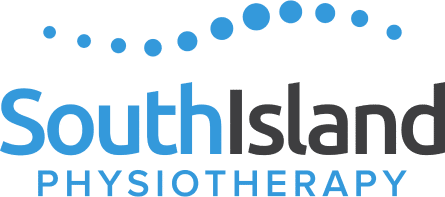Understanding Sciatica: What It Is, Why It Hurts, and How We Heal
Sciatica, also known as lumbar radiculopathy, occurs when a nerve root in the lower back becomes irritated or compressed. This typically affects the sciatic nerve, the largest nerve in the body, which travels from the lumbar spine through the hips and down each leg.
Sciatica pain often feels like sharp, burning, or electric sensations. It usually affects only one side and may be accompanied by numbness, tingling, or muscle weakness. It can be alarming, but the good news is that most people recover without surgery, and physical therapy is highly effective for pain relief.
What Causes Sciatica?
Common causes include:
- Herniated disk – when the soft center of a spinal disk presses on a nerve root
- Bone spurs – excess bone growth that compresses spinal nerves
- Spinal stenosis – narrowing of the spinal canal
- In rare cases: infection, tumor, or trauma affecting the spinal cord, bladder, or bowel
Most cases are due to a herniated disk, but it’s important to remember that the spine is resilient. Disks are adaptable structures that respond to stress. Like muscles, they grow stronger and healthier when used properly.
Symptoms of Sciatica
Sciatica may present with:
- Low back pain that radiates into the buttocks and leg
- Numbness or tingling down one leg
- Muscle weakness in the foot or leg
- Difficulty walking or standing
- Rarely, bladder or bowel changes (seek urgent care if present)
Diagnosing Sciatica and Identifying Risk Factors
Diagnosis typically involves a thorough physical examination and medical history. Imaging (MRI or CT scan) may be used to identify a herniated disk or bone spur.
Risk factors for sciatica include:
- Sedentary lifestyle
- Poor physical load management
- Obesity
- Chronic stress
- Poor dietary habits
- Poor sleep quality
Comparing Treatment Options: Physical Therapy vs. Surgery
Many assume they need surgery for severe pain caused by sciatica, but most recover without surgery.
Conservative (Non-Surgical) Treatment Includes:
- Physical therapy with graded movement
- Anti-inflammatory drugs
- Gentle stretching exercises
- Sleep and stress optimization
- Dietary improvements
- Load and activity modifications
When is Surgery Recommended?
Surgery may be considered if:
- Symptoms last longer than 3 months
- There’s progressive muscle weakness
- Loss of bladder or bowel control
A 2020 BMJ review found that early surgery may speed up short-term recovery, but long-term outcomes were similar to those who had physical therapy only. In most cases, conservative care is effective.
Do You Really Need Core Exercises?
Contrary to popular belief, core strengthening is not required to recover from sciatica. Research shows that sciatic pain can improve without targeted core work. That said, light core engagement early on can help reintroduce safe motion and reduce fear of movement. But let’s be clear: core exercises are optional, not essential.
The McKenzie Method: A Smart First Step
The McKenzie protocol is a widely-used approach in physical therapy that helps identify movements that reduce nerve pain and centralize symptoms. It’s particularly effective in the early phase of recovery, especially when symptoms are aggravated by spinal flexion.
Recovery in 3 Stages:
Stage 1: Reintroduce Movement
- McKenzie-based movements
- Walking and light stretching
- Reduce sensitivity of the nerve root
Stage 2: Load the Spine
- Progressive loading with squats, deadlifts, and full-body strength work
- Focus on tissue adaptation, not pain elimination
Stage 3: Reintegrate Function
- Return to hobbies, sports, work, and play
- Exposure to real-world loading and impact
Debunking the Myth of Fragile Disks
A common belief is that people with sciatica should avoid impact and lifting. This is outdated and incorrect. Humans are not machines that wear out — we are ecosystems that adapt to stress.
When disks are exposed to appropriate stress, they get thicker, stronger, and more resilient. Long-term avoidance of load often leads to deconditioning, increased pain sensitivity, and reduced quality of life.
Supporting Recovery Through Lifestyle
Successful recovery isn’t just about the right exercises. It also depends on:
- Sleep quality – deep sleep helps tissue healing
- Dietary practices – anti-inflammatory foods aid recovery
- Stress management – emotional and psychological states affect nerve pain
- Physical load management – balancing rest with movement
Your nervous system responds to your entire environment — not just your physical symptoms.
Frequently Asked Questions
- What’s the difference between sciatica and low back pain?
Low back pain is often localized, while sciatic pain radiates from the lower back into the leg.
- How long does it take to recover from sciatica?
Most people feel significant relief within 6–12 weeks. Recovery varies, but many get better without surgery.
- Do I need imaging to confirm sciatica?
Not always. A skilled clinician can often diagnose lumbar radiculopathy through a physical examination.
- Can I exercise with sciatica?
Yes. Movement is key. With guidance, exercise helps reduce pain and improve function.
- Is surgery my only option for severe sciatic pain?
No. Many patients avoid surgery and still get long-term pain relief through physical therapy and lifestyle changes.
- Why is my pain worse on some days and not on others?
This is common with nerve irritation. Flare-ups are normal. The goal is to build long-term resilience.
Getting Back to Pain-Free Movement
Sciatica can feel scary, but it doesn’t mean your spine is damaged. With movement, support, and the right treatment, you can recover fully — often without surgery. Remember: your body is designed to heal. You are not broken.
Our Therapists at South Island Physiotherapy understand that through structured movement like the McKenzie protocol, progressive loading with exercises like squats and deadlifts, and holistic care including sleep, stress, and dietary support, recovery is not only possible — it’s expected. If you’re ready to move confidently again, book a consultation with our team at South Island Physio today and take the first step toward lasting relief from sciatic pain.

